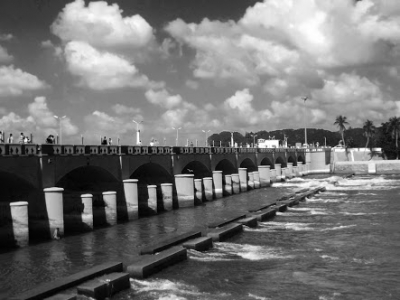How old is the Kallanai dam?

Kallanai Dam or the Grand Anicut is one of the oldest dams in the world still in use. It is the fourth oldest water diversion or water regulator structure in the world. Built in the 2nd century AD across the Cauvery River in Tiruchirapalli district, Tamil Nadu, by King Karikala of the Chola Dynasty, the dam is made of unhewn stone and is 1,080 feet long and 66 feet wide. The dam was remodelled by the British during the 19th century. The area irrigated by the ancient irrigation network is about 28,000 hectares. By the early 20th century, the irrigated area had been increased to about 400,000 hectares.
The unique design and its effective functioning amazed the British in 1800s many years later and their military engineers were asked to study the river and the ancient dam. With an aim to increase irrigated area the British built another dam downstream by replicating the one made by Karikalan Chola. The Lower Anicut was built by Sir Aurthur Cotton in 19th century on a major tributary of River Kaveri.
While the tourists flock to gardens and bridge near Lower Anicut, the original Kallanai dam still stands strong and functions with as much effectiveness as 20 centuries ago. A larger than life statue of Karikalan atop a majestic elephant sits in a grandiose memorial structure, the Karikalan Chola Manimandapam. A statue of Sir Aurthur Cotton who built the second dam modelled after Kallanai dam has also been erected on the bridge.
Successful engineering, as they say, is all about understanding how things break or fail. It was this understanding of devastation that the fierce river waters could wreak that inspired ancient engineers to look at means to harness and prevent destruction. Indeed the story of civilization is in a sense the story of engineering….the long and arduous struggle to make the forces of nature work for man’s good.
Picture Credit : Google